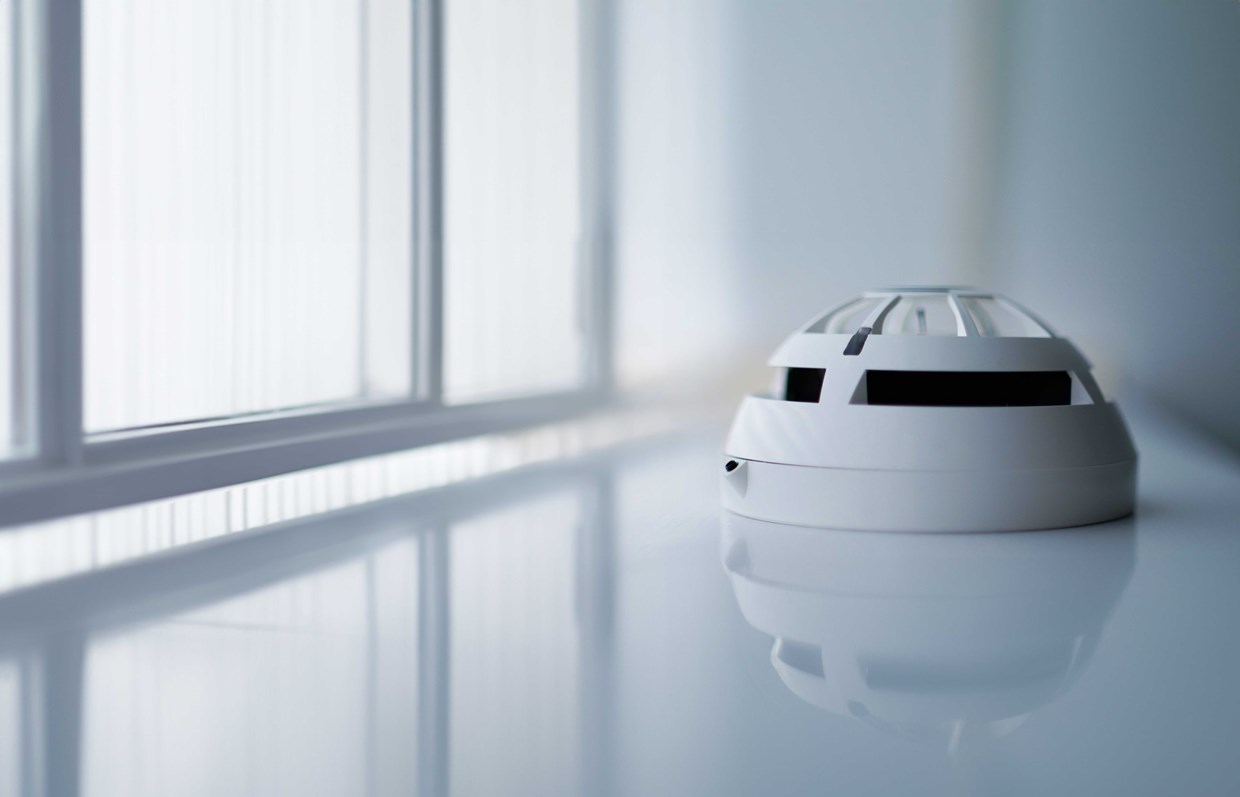Soteria Tri-Sensor Detector (Dual Optical/Heat/CO)
SA5100-810APO
You are here

As vaping becomes increasingly prevalent in prisons, traditional smoke detection systems are facing significant challenges.
Standard devices often misinterpret vaping vapor as smoke, leading to false alarms that disrupt daily operations, waste resources, and create unnecessary panic among inmates and staff.
In response, innovative solutions are being developed to accurately distinguish between actual fire hazards and nuisance interference, such as vaping. One such solution is the Soteria Tri-Sensor, a fire detector that has demonstrated exceptional performance in prison environments.
Vaping has surged in popularity within the prison system, offering inmates a seemingly safer alternative to smoking traditional cigarettes. However, this trend has introduced a new problem for prison management. Traditional smoke detectors, which are sensitive to particles in the air, often trigger alarms when exposed to the vapor produced by electronic cigarettes. This leads to frequent false alarms, causing significant operational disruptions.
False alarms not only strain prison resources but also create a "cry wolf" effect, where both staff and inmates become desensitised to alarms, potentially compromising safety in real fire situations. Additionally, the constant false alarms contribute to a stressful environment, exacerbating tensions within the prison population.
The Soteria Tri-Sensor is a cutting-edge fire detection system designed to address the limitations of traditional smoke detectors, particularly in environments prone to nuisance interference like prisons. The Tri-Sensor technology integrates three key elements — dual optical smoke detection, heat detection, and carbon monoxide (CO) detection — to provide a comprehensive and reliable response to actual fire threats.
Three of the five modes available in the Tri-Sensor provide technical verification by requiring two different sensors to detect alarm conditions simultaneously before notifying the panel – producing a confirmed alarm from the detector. This ensures that vapour from a vape device won’t trigger the alarm, as it doesn’t contain Carbon Monoxide or produce a high enough heat signature to trigger the heat element of the detector.

To evaluate the effectiveness of the Soteria Tri-Sensor, a Category B prison known for its frequent false alarms due to vaping was selected for a pilot study. The prison had been experiencing a much higher than average amount of false alarms per week, primarily triggered by inmates vaping in their cells. These frequent disruptions were not only costly in terms of staff time and resources but also undermined the safety and security protocols within the facility.
The Soteria Tri-Sensor was installed in all of the cells in the affected wings. Over a 3-month period testing period, the performance of the Tri-Sensor was closely monitored and compared to the existing smoke detection system.
The results were remarkable. The Soteria Tri-Sensor did not trigger a single false alarm caused by vaping during the entire testing period, even in areas where inmates were known to vape regularly. In contrast, the existing smoke detectors continued to experience false alarms, further highlighting the superiority of the Tri-Sensor technology.
The successful implementation of the Soteria Tri-Sensor in the pilot prisons has led to several key outcomes. Firstly, the reduction in false alarms has improved operational efficiency, freeing up staff time and resources that were previously spent responding to unnecessary alarms. Secondly, the improved reliability of the fire detection system has enhanced the overall safety of the prison environment, ensuring that alarms are taken seriously by staff.
Moreover, another possible benefit of reducing these nuisance alarms is the decreased stress levels among inmates due to constant interruptions caused by false alarms. Eliminating this problem could contribute to a more stable and manageable environment, especially for the staff – which is critical in a security setting.
Given the success of this case study, the Soteria Tri-Sensor is now being considered for broader implementation across the prison system. Its ability to effectively address the challenges posed by vaping and other nuisance interference positions it as a critical tool in modern prison management.

We chose the Apollo Tri Sensor for its advanced multi-criteria detection, specifically suited for challenging environments like custodial prison cells. Its ability to detect smoke, heat, and carbon monoxide while significantly reducing false alarms from vaping was a crucial factor. The sensor's resilience to malicious activation and its high performance in tough environments ensured that it provided reliable safety without frequent disruptions.
As vaping and other similar challenges continue to evolve, the adoption of innovative solutions like the Soteria Tri-Sensor will be essential in maintaining security and safety in correctional facilities worldwide.
Soteria Tri-Sensor Detector (Dual Optical/Heat/CO)
SA5100-810APO
The Soteria Tri-Sensor Detector (Dual Optical/Heat/CO) uses advanced dual optical sensing technology to accurately detect smoke particles and discriminate against false alarm stimuli. It has a centrally located heat thermistor, along with a CO sensor giving you three methods of detection.